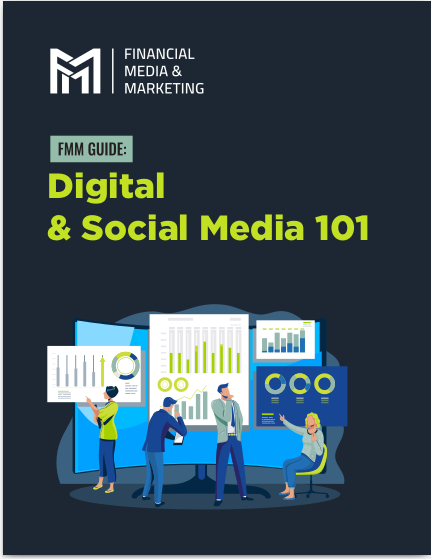Key Takeaways
- Thorough preparation and setting clear objectives are crucial for successful financial review meetings with clients.
- Effective communication, addressing client concerns, and providing actionable recommendations enhance the value of these meetings.
How to Lead Successful Financial Review Meetings with Clients
Financial review meetings are critical touchpoints in the client-advisor relationship. These meetings provide an opportunity to assess financial progress, make necessary adjustments, and strengthen trust. Here’s how to lead successful financial review meetings with clients.
Prepare Thoroughly for Each Meeting
Preparation is key to a successful financial review meeting. It demonstrates your commitment to the client’s financial well-being and ensures the meeting is productive.
Review Client Files
Start by reviewing the client’s financial files, including their goals, investment portfolio, recent transactions, and any previous meeting notes. Understanding their current financial situation and past interactions will help you tailor the meeting to their specific needs.
Analyze Performance Data
Gather and analyze performance data related to the client’s investments. Identify areas of strong performance and those that may need attention. Be ready to discuss the reasons behind these performances and any external factors that might have influenced them.
Prepare Discussion Points
Create a list of key discussion points based on your analysis. This can include updates on market trends, performance of specific investments, progress towards financial goals, and any recommended changes. Having a structured agenda helps keep the meeting focused and efficient.
Set Clear Objectives for the Review
Setting clear objectives for the review meeting ensures that both you and the client have a mutual understanding of what will be covered and achieved.
Define Meeting Goals
Define the goals of the meeting and communicate them to the client in advance. This might include reviewing financial performance, discussing new goals, addressing concerns, or adjusting investment strategies. Clear objectives help manage expectations and ensure the meeting is productive.
Prioritize Key Topics
Prioritize the most important topics to ensure they are covered thoroughly. If time permits, secondary topics can also be addressed. This prioritization helps in managing time effectively during the meeting.
Create a Comfortable and Professional Environment
The environment in which the meeting takes place can significantly impact its success. A comfortable and professional setting helps clients feel at ease and engaged.
Choose the Right Setting
Choose a setting that is private and free from distractions. Whether it’s a conference room in your office, a quiet café, or a virtual meeting space, ensure that the environment is conducive to focused and confidential discussions.
Offer Comfort
Provide amenities such as water, coffee, or tea to make the client feel welcome. Small gestures of hospitality can help create a positive atmosphere.
Ensure Technical Readiness
If the meeting is virtual, ensure all technical aspects are in place. Test your video conferencing software, ensure you have a stable internet connection, and that all necessary documents are accessible. Technical issues can disrupt the flow of the meeting and detract from its effectiveness.
Use Clear and Concise Communication
Clear and concise communication is essential for ensuring the client understands the information presented and feels confident in the advice given.
Avoid Jargon
Avoid using financial jargon or overly technical language. Instead, use simple and straightforward terms that the client can easily understand. This helps in making complex concepts accessible.
Use Visual Aids
Use visual aids such as charts, graphs, and slides to illustrate key points. Visuals can help clients better understand their financial performance and the reasoning behind your recommendations.
Check for Understanding
Regularly check for understanding by asking the client if they have any questions or if something needs further clarification. This ensures they are fully engaged and comprehending the information shared.
Review Financial Goals and Progress
Reviewing the client’s financial goals and the progress made towards achieving them is a central part of the financial review meeting.
Revisit Goals
Revisit the client’s financial goals and discuss any changes that may have occurred since the last meeting. Goals can evolve based on life events, market conditions, or personal preferences, and it’s important to keep them up to date.
Measure Progress
Measure the progress made towards these goals using quantifiable metrics. Highlight achievements and areas where the client is on track, as well as any areas that may require additional focus or adjustment.
Discuss Investment Performance and Adjustments
A detailed discussion on the performance of the client’s investments and any necessary adjustments is crucial for maintaining a successful financial strategy.
Review Portfolio Performance
Review the performance of the client’s investment portfolio, including individual assets and overall performance. Discuss the factors contributing to performance, such as market trends, economic conditions, and specific asset performance.
Recommend Adjustments
Based on your analysis, recommend any adjustments needed to align the portfolio with the client’s goals and risk tolerance. This might include rebalancing the portfolio, changing asset allocations, or introducing new investment opportunities.
Address Client Concerns and Questions
Addressing client concerns and questions is vital for building trust and ensuring client satisfaction.
Encourage Questions
Encourage the client to ask questions and express any concerns they may have. Active listening and empathetic responses show that you value their input and are committed to addressing their needs.
Provide Reassurance
Provide reassurance by explaining how their financial plan is designed to weather market fluctuations and other uncertainties. Reinforce the long-term perspective and the strategies in place to achieve their goals.
Provide Actionable Recommendations and Next Steps
Providing actionable recommendations and outlining next steps ensures that the client leaves the meeting with a clear understanding of what needs to be done.
Actionable Advice
Provide specific, actionable advice that the client can implement. This might include adjusting investment contributions, exploring new investment opportunities, or making changes to their financial plan.
Next Steps
Outline the next steps and who is responsible for each action. Clear follow-up actions help ensure that recommendations are implemented and progress continues towards financial goals.
Summarize Key Points and Confirm Follow-Up Actions
Summarizing the key points discussed and confirming follow-up actions helps reinforce the meeting’s objectives and ensures mutual understanding.
Recap Key Points
Recap the key points discussed during the meeting, including financial performance, goals, and recommended actions. This summary helps reinforce the important information and ensures the client leaves with a clear understanding.
Confirm Follow-Up
Confirm the follow-up actions and set a timeline for any next steps. Ensure both you and the client are clear on what needs to be done and by when. Setting a follow-up meeting or check-in helps maintain accountability and momentum.
Follow Up with Detailed Meeting Notes
Providing detailed meeting notes after the review meeting helps clients retain the information discussed and provides a reference for future actions.
Document Discussion
Document the key points, decisions made, and actions agreed upon during the meeting. Detailed notes help ensure nothing is overlooked and provide a clear record of the discussion.
Share Notes Promptly
Share the meeting notes promptly with the client. This shows professionalism and helps the client recall and act on the discussion points.
Include Contact Information
Include your contact information and invite the client to reach out with any further questions or concerns. Open lines of communication reinforce trust and accessibility.
Conclusion
Leading successful financial review meetings with clients requires thorough preparation, clear communication, and a client-centric approach. By preparing thoroughly, setting clear objectives, creating a comfortable environment, using concise communication, reviewing goals, discussing performance, addressing concerns, providing actionable recommendations, summarizing key points, and following up with detailed notes, financial advisors can ensure productive and valuable meetings. These practices not only enhance client satisfaction but also strengthen the advisor-client relationship, fostering long-term trust and loyalty.
Contact Information:
Email: [email protected]
Phone: 1949245898
Bio:
Madison Browning holds a Bachelor of Science in Business Management and has extensive experience in leadership roles within notable companies. Currently, Madison serves as a marketing specialist for Financial Media Marketing. With a keen eye for design and a passion for storytelling, Madison is also an avid graphic designer and content writer, consistently delivering compelling and visually appealing content.










